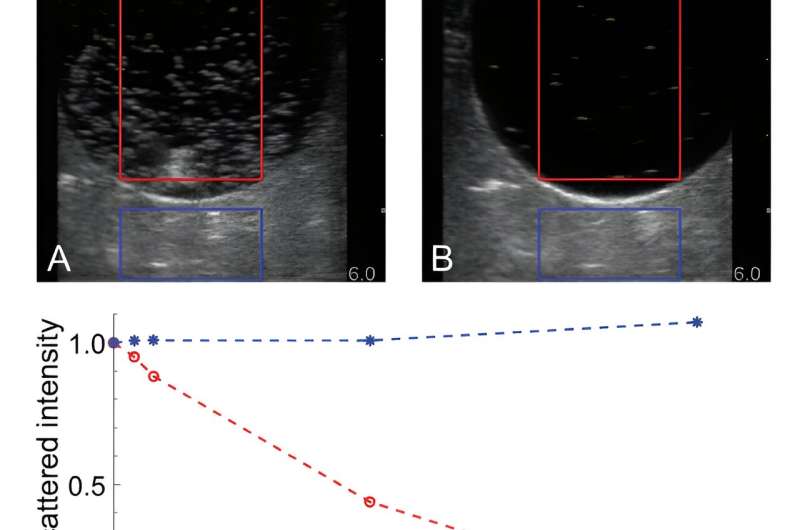This article has been reviewed according to Science X's editorial process and policies. Editors have highlighted the following attributes while ensuring the content's credibility:
fact-checked
proofread
First experiments with carbon black pigment dispersion acting as a Janus ultrasound contrast agent

Theranostic ultrasound contrast agents comprise a therapeutic component whose controlled release is triggered by an ultrasound pulse. However, once the therapeutic component has been released from an ultrasound contrast agent microbubble, its intended uptake cannot be monitored, as its acoustically active host has been destroyed.
Acoustic Janus particles, whose hydrophobic and hydrophilic properties depend on the external acoustic regime, are of potential use as contrast agents and drug-delivery tracers. The purpose of a new study published in BIO Integration was to evaluate the hypothesis that submicron particles with Janus properties may act as ultrasound contrast agents whose hydrophobicity changes over time.
Fifty samples of carbon black were subjected to 5-minute sonication with pulses with a center frequency of 10 MHz and a 1% duty cycle, after which the optical absorption coefficients were measured in n-octanol and water. These coefficients were compared with those of unsonicated samples.
Preliminary results show that the difference between the linear absorption coefficients of sonicated and unsonicated samples was Δα = 80 ± 13 m−1 immediately after sonication, indicating that the carbon black particles were less hydrophobic after sonication than prior to it. Forty-eight hours after sonication, the difference in linear optical absorption coefficients had lessened to Δα = 16 ± 9 m−1, indicating that the carbon black particles had become more hydrophobic over time, but not equal to the hydrophobicity situation prior to sonication.
These experiments confirmed that submicron carbon black particles have acoustic Janus properties.
More information: Jean de Bruin Jordaan et al, First experiments with carbon black pigment dispersion acting as a Janus ultrasound contrast agent, BIO Integration (2023). DOI: 10.15212/bioi-2023-0004





















